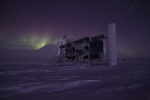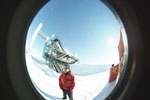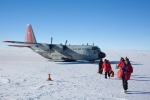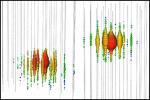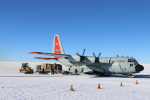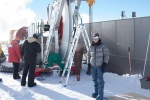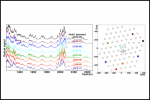A few days ago, the IceCube Collaboration presented strong evidence for an extraterrestrial neutrino flux from an analysis that looked at neutrino-induced events inside the IceCube detector. However, scientists will not be completely sure about its origin until they have an observation of an astrophysical neutrino flux in all possible detection channels. And, more importantly, by looking at the astrophysical neutrino signal in every channel we can learn more details about the origin of cosmic neutrinos and of ultra-high-energy cosmic rays (UHECR).
Results from several new analyses with partial IceCube configurations are being published these days. The IceCube Collaboration is using several independent methods to build a step-by-step probe for the existence of an astrophysical neutrino flux in all detection channels. Each result published so far strengthens the evidence for an astrophysical neutrino flux that was recently presented by the IceCube Collaboration in Science.
From the most remote location on Earth, the IceCube Neutrino Observatory peers into deep space. The telescope uses thousands of light sensors built into a cubic kilometer of South Pole ice to reconstruct images of cosmic high-energy neutrinos. IceCube data must be corrected for tiny amounts of contamination, microscopic dust trapped within the ice of the telescope itself. These impurities originated here on Earth, as mineral dust lofted from continental landmasses and ash from ancient volcanic eruptions. First considered a nuisance, the dust in IceCube has become a subject for novel research, telling us vital stories about Earth’s past climate changes.

